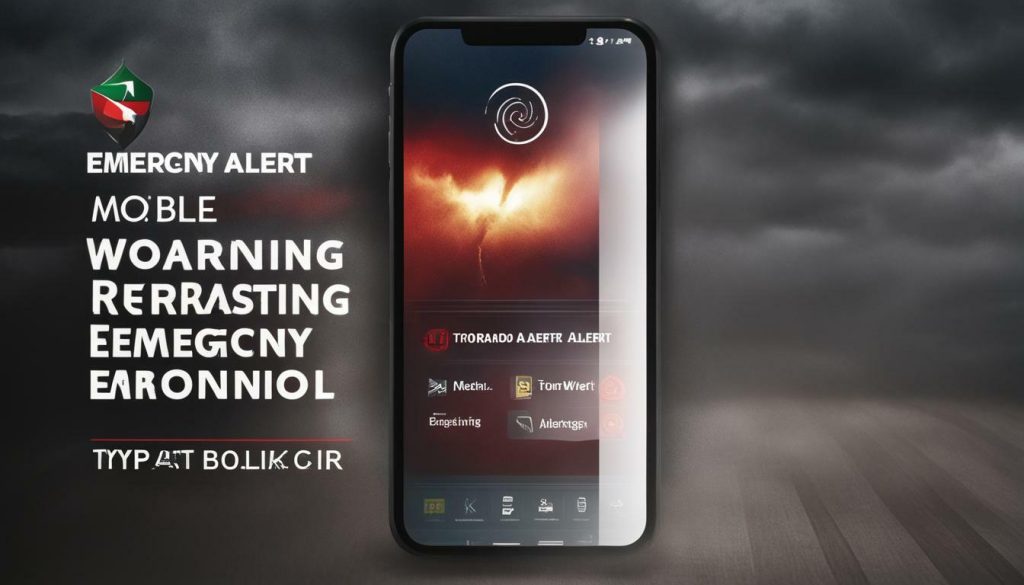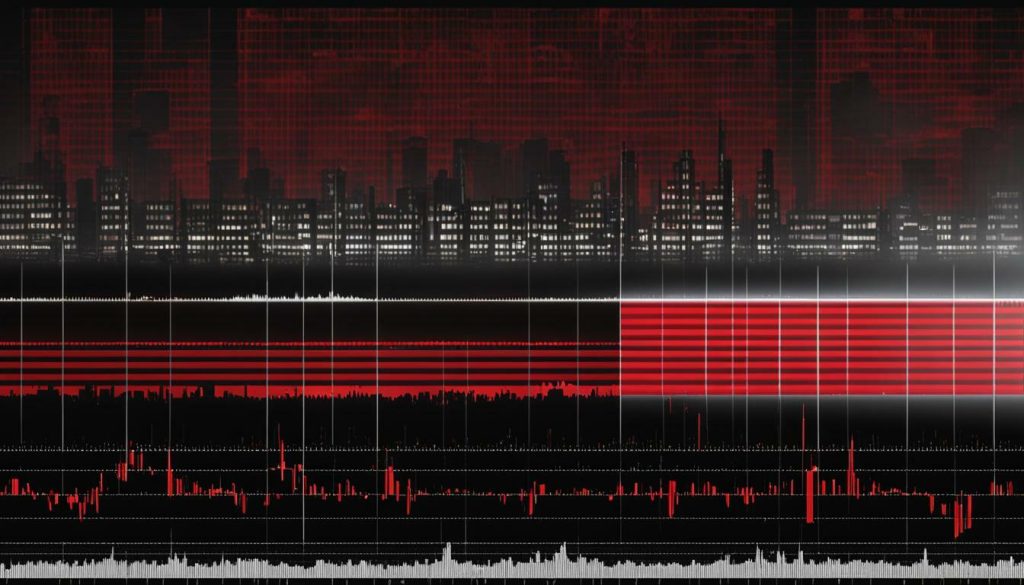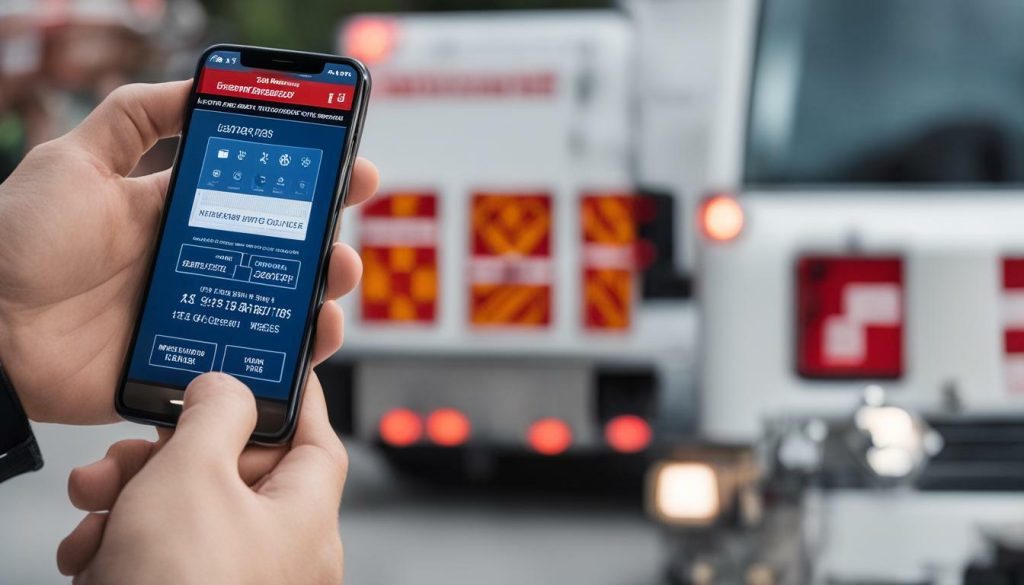The Nationwide Emergency Alert Test 2023 is an important nationwide test that aims to ensure the effectiveness of emergency alert systems in warning the public about emergencies. Scheduled to take place on October 4, 2023, at approximately 2:20 p.m. ET, this test will consist of two parts: the Wireless Emergency Alerts (WEA) and the Emergency Alert System (EAS).
The WEA portion will be directed to all consumer cell phones, while the EAS portion will be sent to radios and televisions. The purpose of the test is to ensure that the systems used for emergency alerts continue to be effective in warning the public about emergencies.
The test message will read, “THIS IS A TEST of the National Wireless Emergency Alert System. No action is needed.” The test will last approximately one minute and will only be sent once. The nationwide WEA test will be broadcasted by cell towers for approximately 30 minutes, and WEA-compatible wireless phones should be capable of receiving the test message if they are on, within range of an active cell tower, and their wireless provider participates in WEA.
The EAS test will be disseminated as a Common Alerting Protocol (CAP) message via the Integrated Public Alert and Warning System-Open Platform for Emergency Networks (IPAWS-OPEN). The test aims to maximize public safety and minimize confusion, and it will be coordinated by FEMA, the Federal Communications Commission (FCC), EAS participants, wireless providers, emergency managers, and other stakeholders.

Key Takeaways:
- The Nationwide Emergency Alert Test 2023 is scheduled for October 4, 2023, at 2:20 p.m. ET.
- The test consists of the Wireless Emergency Alerts (WEA) and the Emergency Alert System (EAS).
- The test message will read, “THIS IS A TEST of the National Wireless Emergency Alert System. No action is needed.”
- The WEA portion will target consumer cell phones, while the EAS portion will be broadcasted to radios and televisions.
- The test aims to ensure the effectiveness of emergency alert systems in warning the public about emergencies.
**
What is the Nationwide Emergency Alert Test?
**
The Nationwide Emergency Alert Test is a crucial exercise conducted at regular intervals to assess the performance and reach of the emergency alert systems across the country. Scheduled to take place on October 4, 2023, at approximately 2:20 p.m. ET, this test aims to ensure that the systems used for emergency alerts, such as the Wireless Emergency Alerts (WEA) and the Emergency Alert System (EAS), continue to be effective in warning the public about emergencies.
During the test, two parts will be conducted: the WEA portion and the EAS portion. The WEA portion is directed to all consumer cell phones, while the EAS portion is sent to radios and televisions. The WEA test message will be sent as a Common Alerting Protocol (CAP) message via the Integrated Public Alert and Warning System-Open Platform for Emergency Networks (IPAWS-OPEN). As for the EAS test, it will be disseminated through participating EAS systems as a CAP message.
The test message for the Nationwide Emergency Alert Test will read, “THIS IS A TEST of the National Wireless Emergency Alert System. No action is needed.” This message will be broadcasted by cell towers for approximately 30 minutes, allowing WEA-compatible wireless phones to receive the test message if they are on, within range of an active cell tower, and their wireless provider participates in WEA.
To ensure maximum public safety and minimize confusion, the test will last approximately one minute and will only be sent once. The coordination of this nationwide test is a collaborative effort among FEMA, the Federal Communications Commission (FCC), EAS participants, wireless providers, emergency managers, and other stakeholders.
| Test Details: | WEA Test | EAS Test |
|---|---|---|
| Date and Time | October 4, 2023, at 2:20 p.m. ET | October 4, 2023, at 2:20 p.m. ET |
| Target Audience | Consumer cell phones | Radios and televisions |
| Test Message | “THIS IS A TEST of the National Wireless Emergency Alert System. No action is needed.” | “THIS IS A TEST of the National Emergency Alert System. No action is needed.” |
| Duration | Approximately one minute | Approximately one minute |
| Dissemination | Broadcasted by cell towers for approximately 30 minutes via WEA | Disseminated by participating EAS systems as a CAP message |
The Nationwide Emergency Alert Test 2023 plays a vital role in ensuring that the emergency alert systems in the United States are prepared to deliver timely and reliable alerts during times of crisis. By participating in this test, the nation’s emergency management agencies, wireless providers, and broadcasters work together to safeguard public safety and enhance the effectiveness of the alert systems that are integral to protecting lives and property.

****
– The Nationwide Emergency Alert Test is scheduled for October 4, 2023, and consists of two parts: the WEA portion for consumer cell phones and the EAS portion for radios and televisions.
– The test message will read, “THIS IS A TEST of the National Wireless Emergency Alert System. No action is needed.”
– The WEA test will be broadcasted by cell towers for approximately 30 minutes, ensuring WEA-compatible phones receive the message.
– The EAS test will be disseminated via participating EAS systems as a Common Alerting Protocol (CAP) message.
– The coordination of this nationwide test involves FEMA, the FCC, wireless providers, emergency managers, and other stakeholders.
– The test aims to assess the performance and reach of the emergency alert systems, enhancing public safety in the event of emergencies.
Wireless Emergency Alerts (WEA)
As part of the Nationwide Emergency Alert Test, the Wireless Emergency Alerts (WEA) system plays a vital role in reaching the public through their cell phones and broadcasting test messages. WEA is designed to ensure that important alerts, such as severe weather warnings, AMBER Alerts, and Presidential alerts, can be quickly and effectively disseminated to the public during emergencies.
During the Nationwide Emergency Alert Test 2023, WEA will deliver a test message to all consumer cell phones across the country. The test message will read, “THIS IS A TEST of the National Wireless Emergency Alert System. No action is needed.” This message will demonstrate the capabilities of the WEA system and allow authorities to assess its effectiveness in reaching the public.
It’s important to note that WEA-compatible wireless phones should be capable of receiving the test message if they are on, within range of an active cell tower, and their wireless provider participates in WEA. The nationwide WEA test will be broadcasted by cell towers for approximately 30 minutes, ensuring that a wide range of devices receive the test message. This comprehensive test will help ensure that the WEA system remains reliable and efficient in delivering emergency alerts to the public.

In conclusion, the Nationwide Emergency Alert Test 2023 includes the Wireless Emergency Alerts (WEA) system to communicate with the public through their cell phones. This test provides an opportunity to evaluate the effectiveness of the WEA system in reaching a wide audience and delivering important emergency messages. By participating in this test, wireless providers, emergency managers, and other stakeholders are working together to enhance public safety and ensure that the nationwide emergency alert system remains reliable and efficient.
| WEA Key Information: | |
|---|---|
| System: | Wireless Emergency Alerts (WEA) |
| Purpose: | To deliver emergency alerts to the public through cell phones |
| Test Message: | “THIS IS A TEST of the National Wireless Emergency Alert System. No action is needed.” |
| Duration: | Approximately 30 minutes |
Emergency Alert System (EAS)
The Emergency Alert System (EAS) is a critical component of the Nationwide Emergency Alert Test, designed to facilitate the broadcast of test messages through radios and televisions to keep the public informed and prepared. During the Nationwide Emergency Alert Test 2023, the EAS segment will play a vital role in ensuring that important emergency information reaches a wide audience.
The EAS test message will be disseminated as a Common Alerting Protocol (CAP) message via the Integrated Public Alert and Warning System-Open Platform for Emergency Networks (IPAWS-OPEN). This system allows for seamless coordination and delivery of test messages to participating EAS devices, including radios and televisions, across the nation.
By leveraging the EAS, the Nationwide Emergency Alert Test aims to maximize public safety and minimize confusion during emergency situations. The test will provide an opportunity to assess the effectiveness of the EAS in communicating critical information to the public and identify any areas for improvement.
| Key Features of the EAS |
|---|
| Utilizes the Common Alerting Protocol (CAP) for message dissemination |
| Targets radios and televisions for widespread broadcast |
| Coordinates with IPAWS-OPEN for seamless delivery of test messages |
The EAS plays a crucial role in emergency preparedness and response, allowing government agencies and emergency management organizations to quickly and effectively communicate important information to the public. By participating in the Nationwide Emergency Alert Test, EAS participants, including broadcasters and cable operators, demonstrate their commitment to public safety and their ability to swiftly disseminate critical alerts and warnings during times of crisis.

The Nationwide Emergency Alert Test 2023 is an opportunity for the public to familiarize themselves with the emergency alert systems in place and ensure they are prepared to receive important messages during times of crisis. By staying informed and staying connected, individuals can play an active role in their own safety and the safety of their communities.
The Test Details
The Nationwide Emergency Alert Test 2023 is scheduled for October 4, 2023, and will last approximately one minute, with the test message stating “THIS IS A TEST of the National Wireless Emergency Alert System. No action is needed.” This critical test aims to ensure the effectiveness of the emergency alert systems in warning the public about potential emergencies.
The test consists of two parts: the Wireless Emergency Alerts (WEA) and the Emergency Alert System (EAS). The WEA portion will be directed to all consumer cell phones, while the EAS portion will be sent to radios and televisions. During the test, the WEA-compatible wireless phones should be capable of receiving the test message if they are on, within range of an active cell tower, and their wireless provider participates in WEA.

The nationwide WEA test will be broadcasted by cell towers for approximately 30 minutes to ensure the widest possible reach. The WEA message will be received by compatible phones, alerting individuals to the test and promoting public awareness. The EAS test, on the other hand, will be disseminated as a Common Alerting Protocol (CAP) message via the Integrated Public Alert and Warning System-Open Platform for Emergency Networks (IPAWS-OPEN), which will enable radios and televisions to receive the test message.
To guarantee a coordinated and efficient test, the Nationwide Emergency Alert Test 2023 will be coordinated by several key entities, including FEMA, the Federal Communications Commission (FCC), EAS participants, wireless providers, emergency managers, and other stakeholders. Together, they will ensure that the test is carried out smoothly, maximizing public safety and minimizing confusion.
| Test Date | Test Message | Test Duration |
|---|---|---|
| October 4, 2023 | THIS IS A TEST of the National Wireless Emergency Alert System. No action is needed. | Approximately 1 minute |
Coordination and Stakeholders
The successful execution of the Nationwide Emergency Alert Test requires coordinated efforts from various entities, such as FEMA, the FCC, and wireless providers, to ensure the smooth functioning of the emergency alert systems.
FEMA, the Federal Emergency Management Agency, plays a crucial role in coordinating the test. They work closely with the FCC, the Federal Communications Commission, which oversees the regulations and policies related to the emergency alert systems used nationwide. Together, they establish the test protocols, communicate with stakeholders, and ensure the test is conducted effectively.
Wireless providers, including major cellular network operators, are integral to the test’s success. They play a vital role in delivering the Wireless Emergency Alerts to the public’s cell phones. These providers work closely with FEMA and the FCC to ensure that their networks are capable of disseminating the test message to reach as many people as possible.
Emergency managers at the state and local levels are also actively involved in the coordination efforts. They work in close collaboration with FEMA and other stakeholders to ensure the test aligns with their emergency response plans and that the public is adequately informed and prepared for the test.

| Entity | Role |
|---|---|
| FEMA | Coordination of the test, establishing protocols, communication |
| FCC | Regulation and policy oversight, collaboration with FEMA |
| Wireless Providers | Delivery of Wireless Emergency Alerts |
| Emergency Managers | Coordination at state and local levels, public information |
Conclusion
The Nationwide Emergency Alert Test 2023 serves as a crucial reminder of the importance of being prepared for emergencies and highlights the efforts made to strengthen the national alert system for the safety of all Americans. Scheduled to take place on October 4, 2023, at approximately 2:20 p.m. ET, this test consists of two parts: the Wireless Emergency Alerts (WEA) and the Emergency Alert System (EAS).
The purpose of the test is to ensure that the systems used for emergency alerts continue to be effective in warning the public about emergencies. The test message, “THIS IS A TEST of the National Wireless Emergency Alert System. No action is needed,” will be sent once and will last approximately one minute. The WEA portion will be directed to all consumer cell phones, while the EAS portion will be sent to radios and televisions.
The nationwide WEA test will be broadcasted by cell towers for approximately 30 minutes, allowing WEA-compatible wireless phones to receive the test message if they are on and within range of an active cell tower, and their wireless provider participates in WEA. The EAS test will be disseminated as a Common Alerting Protocol (CAP) message via the Integrated Public Alert and Warning System-Open Platform for Emergency Networks (IPAWS-OPEN).
FEMA, the Federal Communications Commission (FCC), EAS participants, wireless providers, emergency managers, and other stakeholders have collaborated to coordinate and implement this important test. The goal is to maximize public safety and minimize confusion during emergency situations. By ensuring that the nationwide emergency alert system functions effectively, this test reinforces the commitment to protecting the well-being of all Americans.
FAQ
When is the Nationwide Emergency Alert Test 2023 scheduled to take place?
The Nationwide Emergency Alert Test 2023 is scheduled to take place on October 4, 2023, at approximately 2:20 p.m. ET.
What does the test consist of?
The test consists of two parts: the Wireless Emergency Alerts (WEA) and the Emergency Alert System (EAS).
Who will receive the Wireless Emergency Alerts (WEA) portion of the test?
The WEA portion will be directed to all consumer cell phones.
Who will receive the Emergency Alert System (EAS) portion of the test?
The EAS portion will be sent to radios and televisions.
What is the purpose of the Nationwide Emergency Alert Test?
The purpose of the test is to ensure that the systems used for emergency alerts continue to be effective in warning the public about emergencies.
What will the test message read?
The test message will read, “THIS IS A TEST of the National Wireless Emergency Alert System. No action is needed.”
How long will the test last?
The test will last approximately one minute and will only be sent once.
How long will the nationwide Wireless Emergency Alerts (WEA) test be broadcasted?
The nationwide WEA test will be broadcasted by cell towers for approximately 30 minutes.
How can WEA-compatible wireless phones receive the test message?
WEA-compatible wireless phones should be capable of receiving the test message if they are on, within range of an active cell tower, and their wireless provider participates in WEA.
How will the Emergency Alert System (EAS) test be disseminated?
The EAS test will be disseminated as a Common Alerting Protocol (CAP) message via the Integrated Public Alert and Warning System-Open Platform for Emergency Networks (IPAWS-OPEN).
Who is coordinating the Nationwide Emergency Alert Test?
The test will be coordinated by FEMA, the Federal Communications Commission (FCC), EAS participants, wireless providers, emergency managers, and other stakeholders.
Source Links
- https://www.fema.gov/press-release/20230803/fema-and-fcc-plan-nationwide-emergency-alert-test-oct-4-2023
- https://www.fema.gov/emergency-managers/practitioners/integrated-public-alert-warning-system/national-test-2023
- https://www.usatoday.com/story/news/nation/2023/10/01/emergency-alert-test-what-to-know/70981620007/
